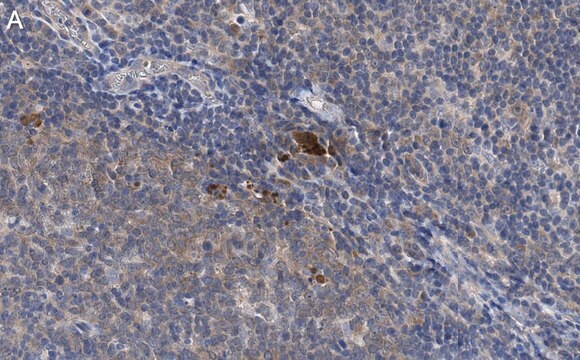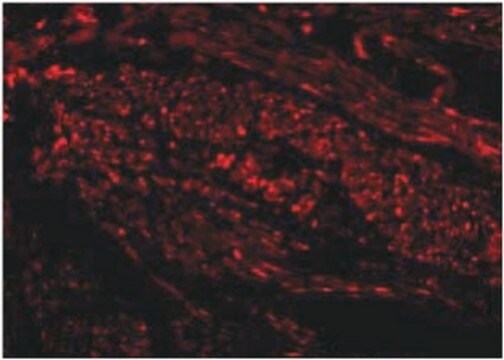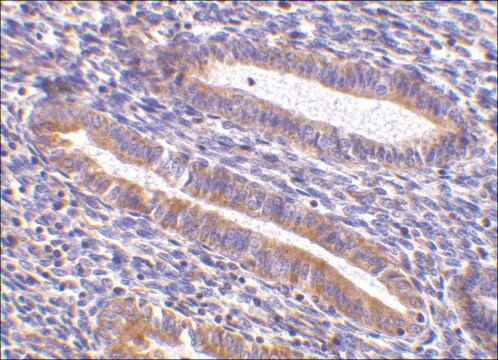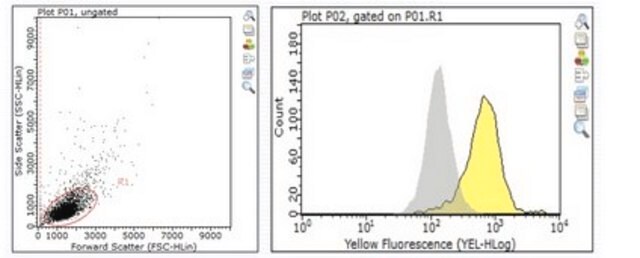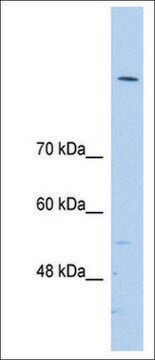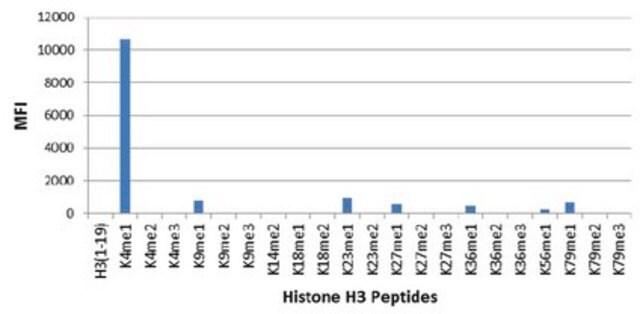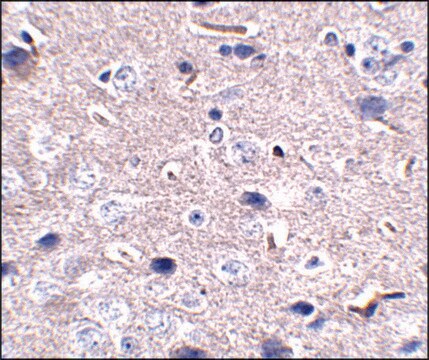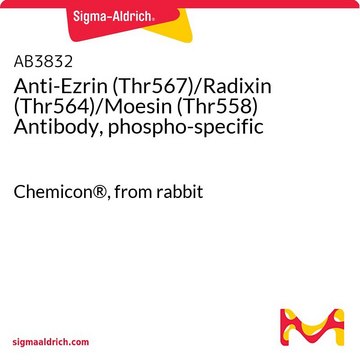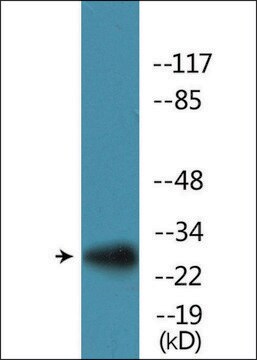MABF245
Anti-TIM-1 Antibody, clone 3B3
clone 3B3, from rat
Sinônimo(s):
Hepatitis A virus cellular receptor 1 homolog, HAVcr-1, Kidney injury molecule 1, KIM-1, T cell immunoglobulin and mucin domain-containing protein 1, T-cell immunoglobulin mucin receptor 1, T cell membrane protein 1, TIM-1, TIMD-1
About This Item
Produtos recomendados
fonte biológica
rat
Nível de qualidade
forma do anticorpo
purified antibody
tipo de produto de anticorpo
primary antibodies
clone
3B3, monoclonal
reatividade de espécies
mouse
técnica(s)
flow cytometry: suitable
Isotipo
IgG2aκ
nº de adesão NCBI
nº de adesão UniProt
Condições de expedição
ambient
modificação pós-traducional do alvo
unmodified
Informações sobre genes
human ... HAVCR1(26762)
Descrição geral
Especificidade
Imunogênio
Aplicação
Affects Function: A representative lot induced a rapid capping of anti-CD3 bound CD3 on the surface of CD4+ T cells with a concomitant T cell morphology change and increased motility (Xiao, S., et al. (2007). J. Exp. Med. 204(7):1691-1702).
Affects Function: A representative lot enhanced the severity of experimental autoimmune encephalomyelitis (EAE) in mice, while clone RMT1-10 prevented EAE (Xiao, S., et al. (2007). J. Exp. Med. 204(7):1691-1702).
Affects Function: A representative lot enhanced T cell proliferation by crosslinking TIM-1 in vitro. When injected in mice in vivo at the beginning and during OVA sensitization, clone 3B3 prevented tolerance induction and enhanced response of isolated spleen T cells to OVA stimulation in culture (Umetsu, S.E., et al. (2005). Nat. Immunol.6(5):447-454).
Affinity Binding Assay: A representative lot bound TIM-1 with a similar association rate as clone RMT1-10 (Cat. No. MABF225), while clone 3B3 displayed a 10-times slower dissociation rate than clone RMT1-10 (Xiao, S., et al. (2007). J. Exp. Med. 204(7):1691-1702).
ELISA Analysis: Representative lots detected recombinant murine TIM-1, but not TIM-3 or TIM-4, Ig fusion protein. Clone 3B3 displayed an enhanced affinity toward TIM-4 fusion construct lacking the mucin domain when compared to full-length TIM-4 fusion construct (Xiao, S., et al. (2007). J. Exp. Med. 204(7):1691-1702; Umetsu, S.E., et al. (2005). Nat. Immunol.6(5):447-454).
Flow Cytometry Analysis: A representative lot immunostained the surface of TIM-1-transfected, but not untransfected or TIM-2-transfected 300.19 mouse pre-B-cells. A time-dependent increase of CD4+ cell surface TIM-1 expression was detected following TCR activation by APCs or by anti-CD3 and anti-CD28 antibodies (Umetsu, S.E., et al. (2005). Nat. Immunol.6(5):447-454).
Inflammation & Immunology
Qualidade
Flow Cytometry Analysis: 0.5 µg of this antibody detected the exogenously expressed murine TIM-1 on the surface of one million transfected 300.19 mouse pre-B-cells.
Descrição-alvo
forma física
Armazenamento e estabilidade
Handling Recommendations: Upon receipt and prior to removing the cap, centrifuge the vial and gently mix the solution. Aliquot into microcentrifuge tubes and store at -20°C. Avoid repeated freeze/thaw cycles, which may damage IgG and affect product performance.
Outras notas
Exoneração de responsabilidade
Não está encontrando o produto certo?
Experimente o nosso Ferramenta de seleção de produtos.
Código de classe de armazenamento
12 - Non Combustible Liquids
Classe de risco de água (WGK)
WGK 2
Ponto de fulgor (°F)
Not applicable
Ponto de fulgor (°C)
Not applicable
Certificados de análise (COA)
Busque Certificados de análise (COA) digitando o Número do Lote do produto. Os números de lote e remessa podem ser encontrados no rótulo de um produto após a palavra “Lot” ou “Batch”.
Já possui este produto?
Encontre a documentação dos produtos que você adquiriu recentemente na biblioteca de documentos.
Nossa equipe de cientistas tem experiência em todas as áreas de pesquisa, incluindo Life Sciences, ciência de materiais, síntese química, cromatografia, química analítica e muitas outras.
Entre em contato com a assistência técnica